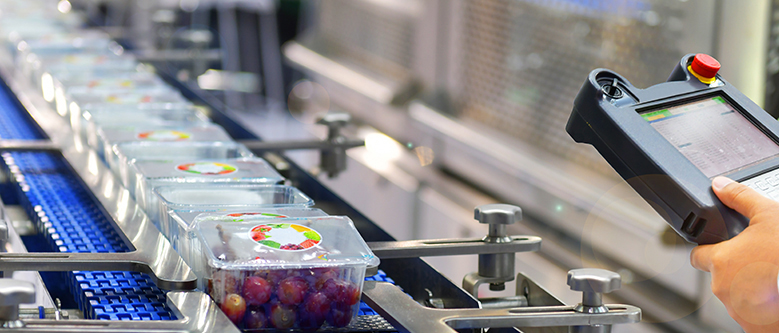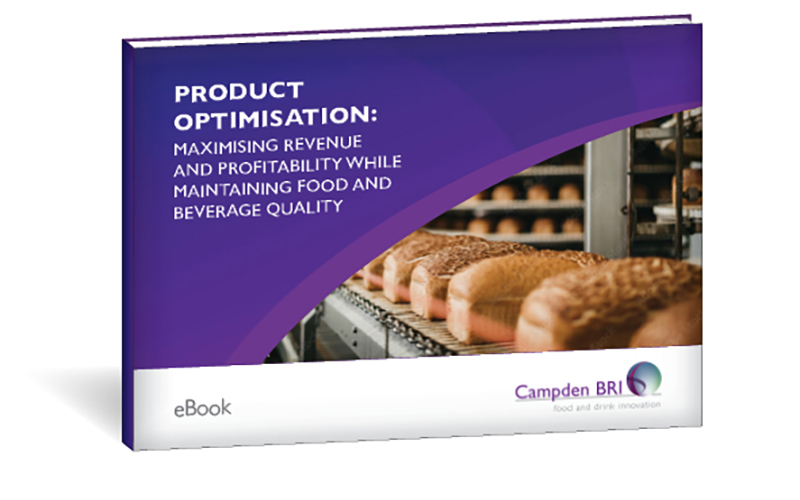
5 reasons to proactively optimise your food and drink products
23 January 2023 | Birsen McArdle, Value Optimisation Lead
The food and drink industry is in significant growth and shows no signs of slowing down. As the global population continues to increase, so do the opportunities for food and drink manufacturers and suppliers. But many need to seize the potential and opt for product innovation and renovation rather than settling for stagnation.
Although your products may currently perform well, new challenges can appear at any time, threatening profitability. From increasing raw material costs to political instability, a once-safe product can quickly become a drain on revenue. Tackling these issues once they’ve already arisen can lead to manufacturing delays and inefficiencies, higher costs and ultimately less profitable products.
Download the complete Product Optimisation eBook, for free, and explore the different strategies that you can undertake to maximise your product revenue and profitability without compromising quality. Download our eBook today

Don’t wait until it’s too late to optimise the products in your portfolio. Performing frequent product optimisation — before external factors force your hand — can ensure your organisation maximises profitability and revenue while keeping you on consumers’ radars. Here we explore five reasons why you should be performing product optimisation proactively.
1. Costs are increasing
Unfortunate economic circumstances mean costs are rising while consumers have less money to spend. Products are, therefore, more expensive to manufacture. Simultaneously, the industry is becoming more competitive as consumers scrutinise their purchases, basing decisions more strongly on attributes they value. This combination of factors is likely to be bad news for manufacturers and suppliers if you’re not adequately prepared, as your products can rapidly become unviable to make and sell.
Optimising your products before they become unviable can insulate you from the economic climate shift in advance, helping to weather the storm. This means understanding what is important to the customer and protecting these values, whilst reducing spending on lower-valued attributes. What’s more, optimising before costs are too high can be more cost-effective in the long run, providing overall better protection for your budget.
2. Ingredients may be unnecessary
When first developing your product, the formulation may have been ideal. But over the product’s lifetime, more and more ingredients can be added on a siloed basis — many of which are not needed. Not only can this add unnecessary expense, but it can also lead to complex production procedures.
Product optimisation allows you to rationalise your formulations, streamlining their development and consolidating your ingredients. Products, therefore, become more cost-effective to manufacture — and in some cases faster to make — giving you the opportunity to invest more time and resources into expanding your portfolio.
3. Your competitors are optimising, too
The food and drink market is highly dynamic, with companies constantly launching new products in a similar space to yours. To keep ahead of the curve and stand out, competitor companies will likely optimise their products regularly and proactively, while advertising positive changes that consumers will benefit from. This means that your products, no matter how high quality, risk fading into the background against exciting, reformulated products if no changes are made.
Proactive product optimisation is therefore vital to stay ahead in the market and keep your product competitive. Whether further improving the quality of your product or reducing manufacturing costs to offer better value to your customers, optimising your product is key to boosting revenue and maximising profit.
4. Technology has significantly advanced
Ingredients are constantly being improved, but did you consider that manufacturing technologies are too? It is likely that, since initially developing your product, new and improved technologies now exist that can significantly improve your manufacturing process.
Automation, for example, offers the opportunity to make processes more cost-effective than existing manual ones. Although the upfront costs can be daunting, identifying which processes will benefit most from automation and optimising the procedure can lead to a significant return on investment (ROI).
5. Product performance fluctuates
While your product may be highly profitable and popular now, hurdles to continued and growing product performance can appear at any time. Internal factors, such as new product launches, can have consequences on related product popularity. Additionally, external factors such as climate change and political turmoil can affect supply chains, requiring new and updated processes.
Undertaking product optimisation ensures that your food and drink products are the most profitable they can be before times become challenging. Reducing costs on a recurring basis — while maintaining your product quality and protecting value attributes — can safeguard your product against future events and minimise any detriment during turbulent times.
Optimise now for a more profitable future
The food and drink industry is constantly changing, with a host of exciting opportunities available to manufacturers and suppliers to tap into and maximise product revenue. But alongside this promise are significant barriers to profitability that threaten to crop up at any time.
Performing regular product optimisation is the key to protecting and boosting your revenue during future challenges. From changing formulations to revamping product packaging, a plethora of options exist to get the most out of your products, while giving consumers a highly positive experience by understanding what they value. Only through proactive and regular product optimisation across your portfolio can you unleash the market potential of your products and maximise their profitability.
How can we help you?
If you’d like to discuss opportunities to optimise your product/s, contact our support team today.
Download our FREE eBook today
To explore the different strategies that you can undertake to maximise your product revenue and profitability without compromising quality, download our eBook today.







